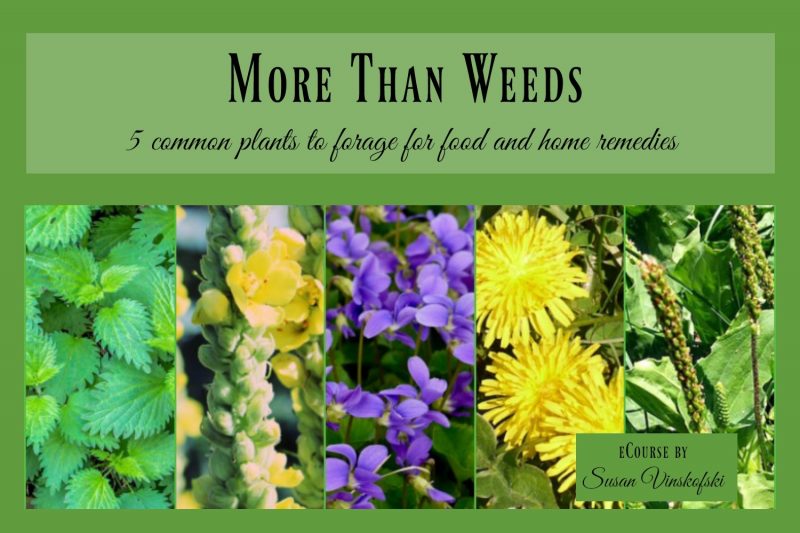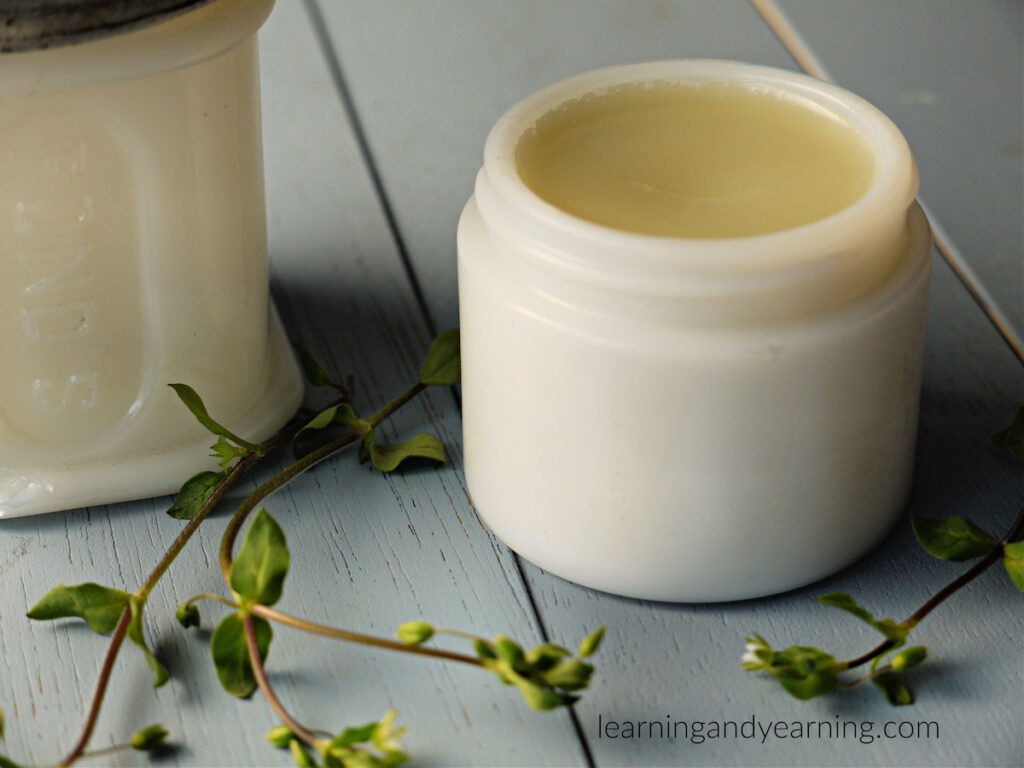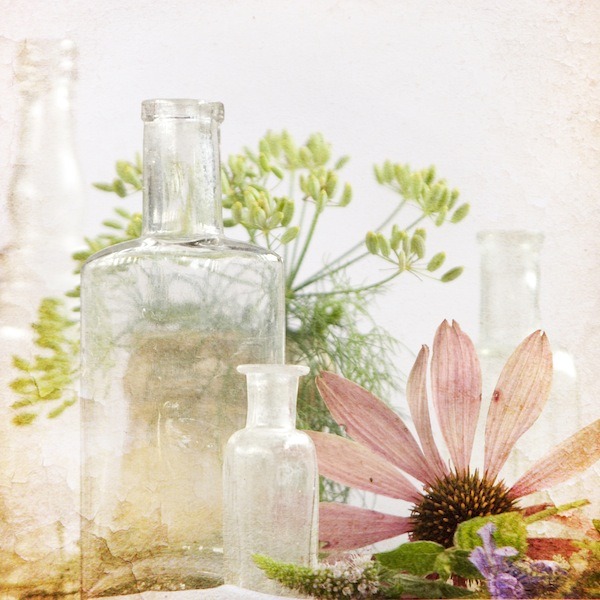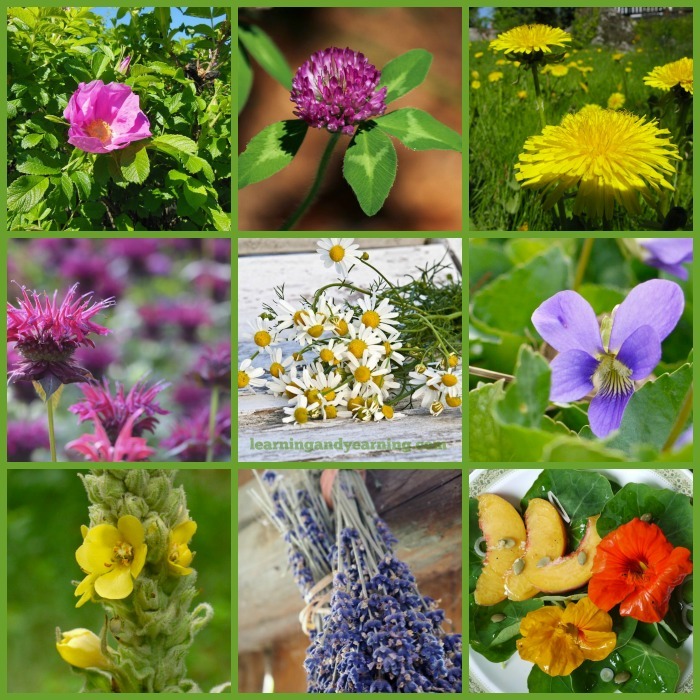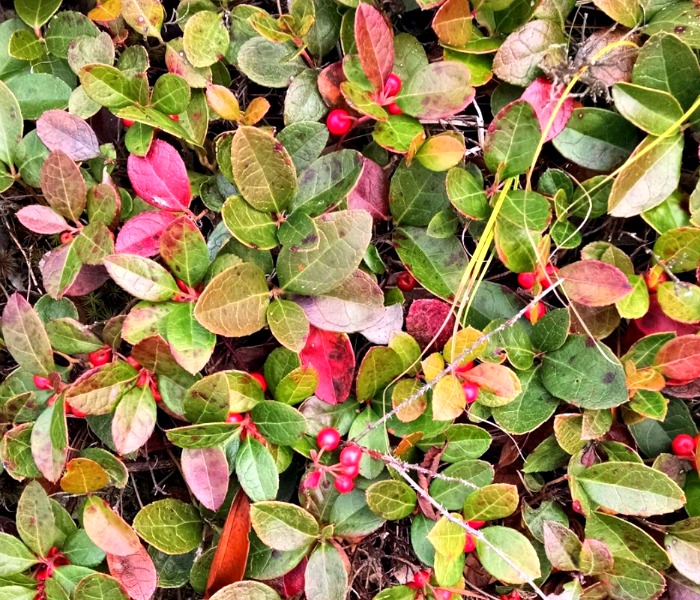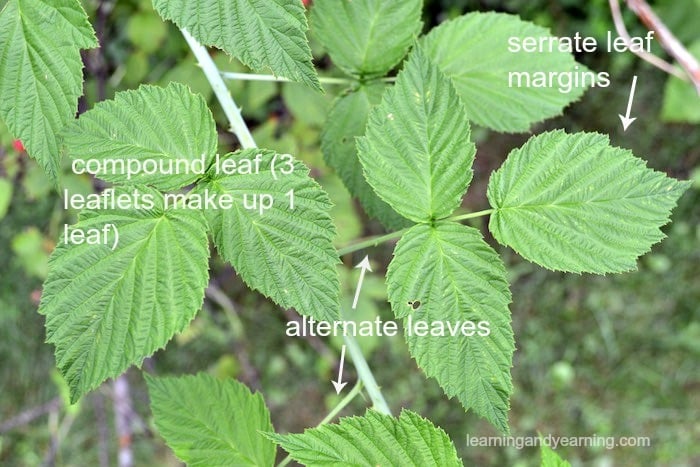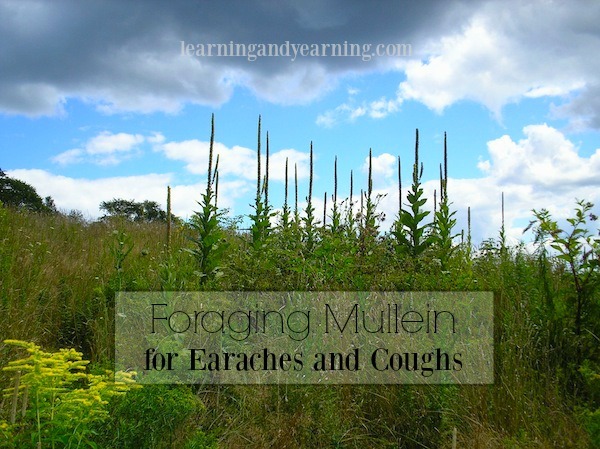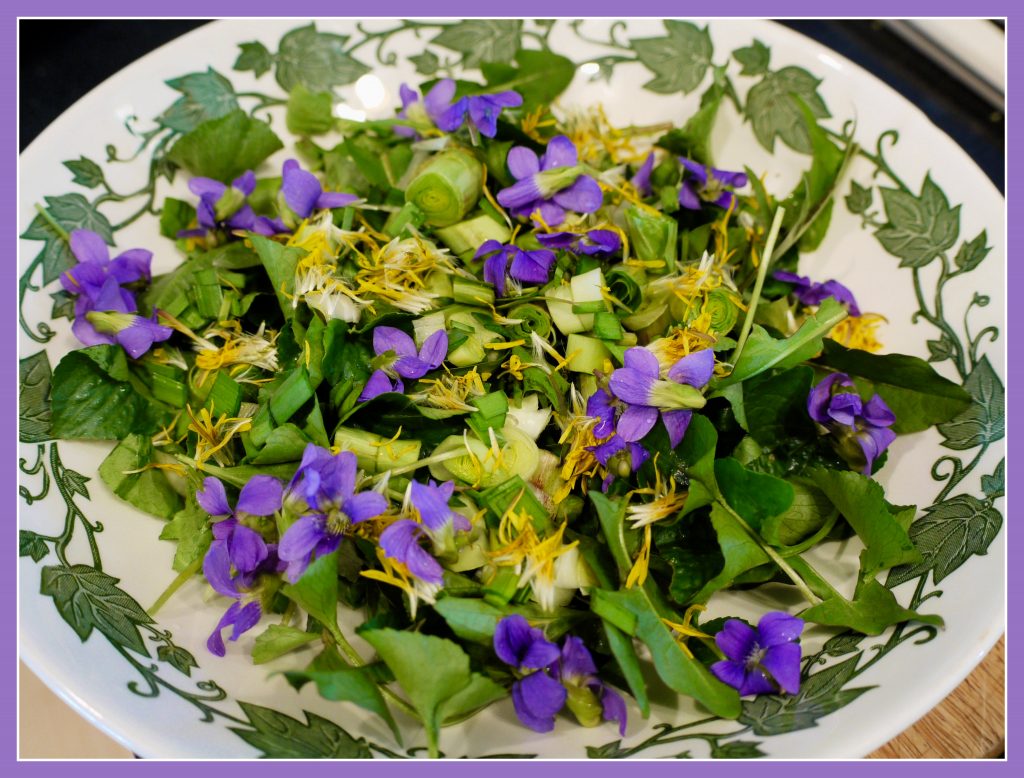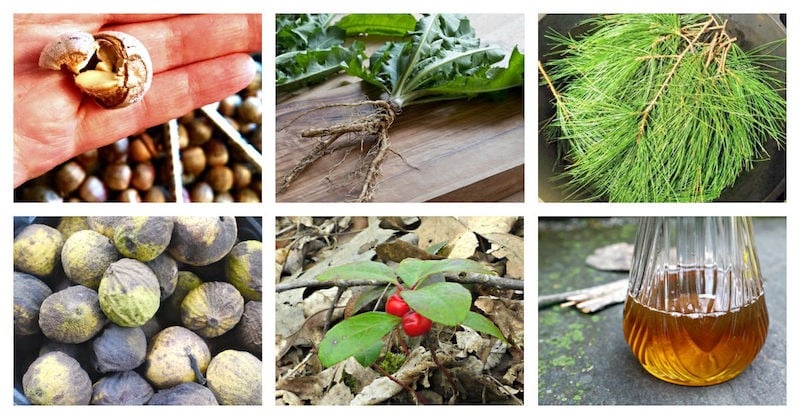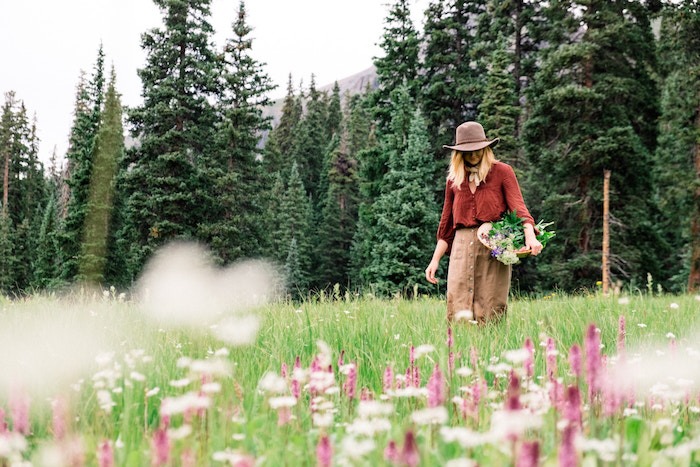What’s So Great About Plantain Leaf
You’ve seen plantain all your life. You’ve stepped on it without even noticing it. According to Katrina Blair in The Wild Wisdom of Weeds, plantain grows everywhere in the world where humans live.
Plantain is both edible and medicinal. We’ll focus here on the medicinal properties and its amazing ability to heal skin. I’ve used it effectively to soothe eczema, severely chapped lips, and rashes, and it can help with so much more.
Plantain is:
- Antibacterial: it inhibits the growth of bacteria
- Astringent: it reduces secretions and discharges
- Antiseptic: it inhibits infections
- Demulcent: it soothes by forming a film over mucus membranes and draws out toxins
- Hemostatic: it stops bleeding
- Vulnerary: it heals wounds
Plantain can soothe and relieve:
- bee and other insect stings
- spider bites
- eczema and psoriasis
- sunburn
- chapped lips
- diaper rash
- burns
- cuts
- rashes
- poison ivy or oak
- acne
How to Identify and Harvest Plantain
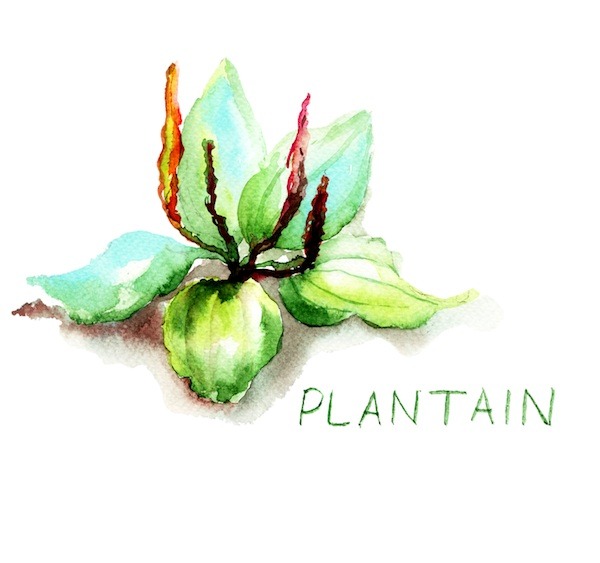 There are 34 species of plantain but the two most common varieties are broad leaf (Plantago major) and narrow leaf (P.lanceolata). Plantain is common in areas where the ground has been compacted and can withstand being walked upon quite easily.
There are 34 species of plantain but the two most common varieties are broad leaf (Plantago major) and narrow leaf (P.lanceolata). Plantain is common in areas where the ground has been compacted and can withstand being walked upon quite easily.
The leaves of plantain grow in a basal or rosette form at the base of the plant. Broad leaf plantain has wide, egg-shaped leaves with several veins running the length of the leaf. When harvested, you’ll notice that the leaves are stringy.
Narrow leaf plantain has long leaves and resembles wide grass, and like broad leaf has long veins that run the length of the leaf.
Plantain has small, greenish-white flowers, each with four petals which grow in clusters at the top of a stalk.
To harvest, simply tear each leaf off at its base. You’ll notice that the leaf will often feel like it is pulling back because of it is so fibrous and stringy.
How to Use Plantain
Using plantain leaf can be as simple as putting a leaf on a cut and using a bandage to keep it in place.
The leaf may also be chewed to release its juices. Applied to poison ivy, this will help to bring relief.
Using plantain leaf to make a balm or salve is a wonderful way to preserve the healing properties of the plant and to keep it on hand whenever needed.
Using Plantain Leaf to Make a Healing Balm
To make a healing balm using plantain leaf you will need to:
- harvest plantain leaves
- dry the leaves – moisture can cause your balm to mold (I use this dehydrator)
- infuse the leaves into oil (olive oil is a great choice because it is healing and because it does not easily go rancid).
- add beeswax to create the balm
- and pour into tins
Let’s go through these step by step.

Ingredients
- plantain leaf
- olive oil
- grated beeswax
Instructions
- Gather plantain leaf. The more you gather, the more balm you will be able to make, but gather at least a few cups of it. Once it is dried, the volume will decrease.
- Carefully wash the leaves with cold water. I wash 3 times. Drain.
- Chop the leaves which will help them to dehydrate more quickly. A food processor makes quick work of the process.
- Spread the chopped leaves in a thin layer in your dehydrator. Dehydrate at 125° for several hours until dry. Alternately, dry them in your oven at its lowest setting.
- Place the dried leaves in a mason or other heat-resistant jar and cover completely with olive oil. Put the lid on your jar.
- Allow the plantain to infuse into the olive oil by allowing it to sit at room temperature for 1 - 2 weeks. Alternately, place the jar into a pot of water. Set this on the stove on the lowest setting possible and infuse for several hours. Longer is better.
- Line a strainer with cheese cloth and strain the plantain leaf out of the olive oil.
- Measure the olive oil and return to the mason jar. For every cup of oil, add 1/4 cup of grated beeswax, or beeswax pastilles. Place the jar into a pot of water and heat on a very low setting. Stir until the beeswax has melted. Allow to cool.
- If the consistency of the balm is too soft, re-melt and add a little more beeswax. If the consistency is too hard, re-melt and add a little more oil.
- Pour the melted balm into tins or small glass jars.
- Store the balm in a cool, dark place.
Other Posts You’ll Love
Natural Home Remedies for Your Medicine Cabinet
Plantain and Jewelweed Home Remedy for Poison Ivy Rash
Plantain & Kelp Plaque-Fighting Tooth Powder
How to Harvest Pine Resin and Use it to Make a Salve
Make Your Own Alternative to Petroleum Jelly
Is it a Weed, or is it an Herbal Remedy?






